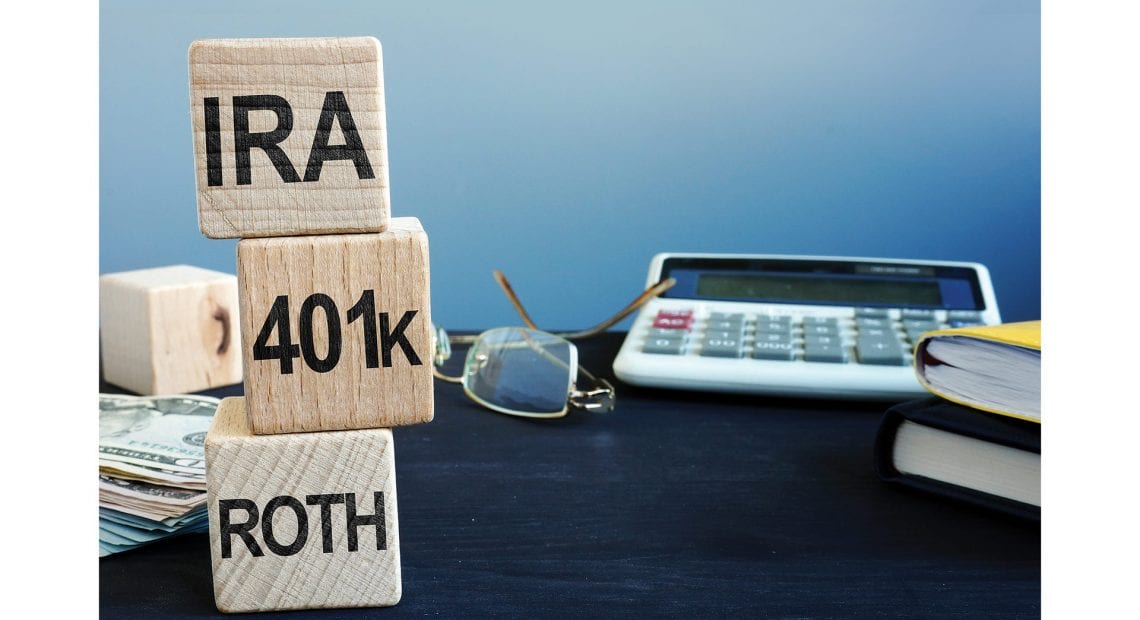Save and SECURE
By Dan Eger

The SECURE Act, or Setting Every Community Up for Retirement Enhancement Act, was signed into law in December 2019. This legislation made it easier and more affordable for individuals to save for retirement by introducing new rules and incentives that promote long-term savings.
The SECURE Act also supports small businesses by making it easier for them to offer retirement plans to their employees.
Overall, the SECURE Act aimed to make retirement savings more accessible and secure for Americans of all ages and economic backgrounds.
The 2019 legislation included changes that affected traditional 401(k)s and IRAs, such as expanded eligibility for opening a Roth IRA, new requirements for minimum distributions from retirement accounts, and incentives for small businesses to offer retirement plans. The law also included provisions to benefit those who are retired or disabled, such as increasing the age at which a person must begin taking required minimum distributions from 70½ to 72.
Legislation commonly referred to SECURE 2.0 Act (the Consolidated Appropriations Act of 2023) was signed into law on Dec. 29, 2022. The SECURE Act 2.0 bolsters the benefits offered in 2019’s version, making it more enticing for employers to provide retirement plans and improve employees’ retirement prospects along the way.
What follows is a summary of some of the provisions, but keep in mind that the act includes more than 90 provisions that potentially affect retirement-savings plans.
Mandatory Automatic Enrollment
Effective for plans beginning after Dec. 31, 2024, new 401(k) and 403(b) plans must automatically enroll employees when eligible. Automatic deferrals start at between 3% and 10% of compensation, increasing by 1% each year to a maximum of at least 10%, but no more than 15% of compensation. Participants can still opt out.
“Overall, the SECURE Act aimed to make retirement savings more accessible and secure for Americans of all ages and economic backgrounds.”
Automatic Escalation
Beginning in 2025, for new retirement plans started after Dec. 29, 2022, contribution percentages must automatically increase by 1% on the first day of each plan year following the completion of a year of service until the contribution reaches at least 10%, but no more than 15%, of eligible wages. Governmental organizations, churches, and businesses with 10 employees or fewer, as well as employers in business for three years or fewer, are exempt from this policy.
Expanded Eligibility for Long-term, Part-time Employees
Under current law, employees with at least 1,000 hours of service in a 12-month period or 500 service hours in a three-consecutive-year period must be eligible to participate in the employer’s qualified retirement plan. SECURE 2.0 reduces that three-year rule to two years for plan years beginning after Dec. 31, 2024.
Increase in Catch-up Limits
Effective after tax year 2024, SECURE 2.0 provides a notable rise in the amount of contributions for those aged between 60 to 63. Generally, the additional catch-up limit for most plans is $10,000 and only $5,000 for SIMPLE plans. These amounts are subject to inflation adjustment just like the normal catch-up contributions. Furthermore, those more than 50 years old are eligible for increased contribution limits on their retirement plans (known as ‘catch-up contributions’). For 2023, the maximum catch-up contribution amount has been set to $7,500 for most retirement plans and will be subject to inflation adjustments.
Rothification of Catch-up Contributions for High Earners
For plans that permit catch-up contributions, high earners ($145,000 in paid wages from the employer sponsoring the plan the preceding year, indexed to inflation) can no longer enjoy the privilege of tax-deferred catch-up contributions, as their contributions need to be characterized as designated Roth contributions.
Treatment of Student-loan Payments for Matching Contributions
Starting in 2024, student-loan payments can be treated as part of your retirement contribution to qualify for employer-matched contributions in a workplace retirement account. Employers will have the flexibility to provide contributions to their retirement plan for employees who are paying off student loans instead of saving for retirement.
Emergency Savings Accounts
Starting in 2024, retirement plans will have the option of providing ‘emergency savings accounts’ that allow non-highly paid employees to make after-tax Roth contributions to a savings account within their own retirement plan. Employers may automatically opt employees into these accounts at no more than 3% of eligible wages. Employees can opt out of participation. No further contributions can be made if the savings account has reached $2,500 (indexed), or a lesser limit established by the employer. The Department of Labor and/or the Treasury Department may issue guidance on these provisions.
Withdrawals for Certain Emergency Expenses
Penalty-free distributions are allowed for “unforeseeable or immediate financial needs relating to necessary personal or family emergency expenses” up to $1,000. Only one distribution may be made every three years, or one per year if the distribution is repaid within three years. Penalty-free withdrawals are also allowed for small amounts for individuals who need the funds in cases of domestic abuse or terminal illness.
Federal Contribution Match
Starting in 2027, low-income employees can gain access to a federal matching contribution of up to $2,000 each year that will be deposited into their retirement savings account. The matching contribution is 50% of the contributions, but it decreases according to income — for example, married taxpayers filing jointly between $41,000 and $71,000, and single taxpayers between $20,500 and $35500.
Required Minimum Distributions
Beginning Jan. 1, 2023, the age for required minimum distribution (RMD) from an IRA is increased to age 73. Starting in 2033, the RMD age will be 75. (IRA owners turning age 72 in 2023 would not be required to take RMDs in 2023.) Furthermore, the penalty for not taking your RMD has been decreased from 50% of what was required to be withdrawn to 25%, and even further down to 10% if corrected within two years.
Facilitation of Error Corrections
The act expands the self-corrections system, allowing more types of errors to be fixed internally without having to amend returns in the Employee Plans Compliance Resolution System.
Immediate Incentives for Participation
At this moment, employers use matching contributions as a means to motivate employees to save for their retirement. Beginning in 2023, employers can incentivize employees with gifts cards or other small monetary rewards to increase engagement, although any financial rewards should be small and cannot come from retirement-plan assets.
In summary, the SECURE Act 2.0 provides many new benefits and opportunities to save for retirement. It allows employers to offer more flexible contributions and encourages employees with incentives to become engaged in their own financial health. With reduced penalties and expanded self-correction rules, this act gives Americans more control over their retirement savings, allowing them to become better prepared for their future.
As always, it’s important to consult with your advisor for advice, as guidance and changes to provisions are expected, and everyone’s situation is unique.
Dan Eger is a tax supervisor at the Holyoke-based accounting firm Meyers Brothers Kalicka, P.C.; (413) 536-8510.








 It’s called the Setting Every Community Up for Retirement Enhancement Act, and it was signed into law just a few weeks ago and took effect on Jan. 1. It is making an impact on taxpayers already, and individuals should know and understand its many provisions.
It’s called the Setting Every Community Up for Retirement Enhancement Act, and it was signed into law just a few weeks ago and took effect on Jan. 1. It is making an impact on taxpayers already, and individuals should know and understand its many provisions.



